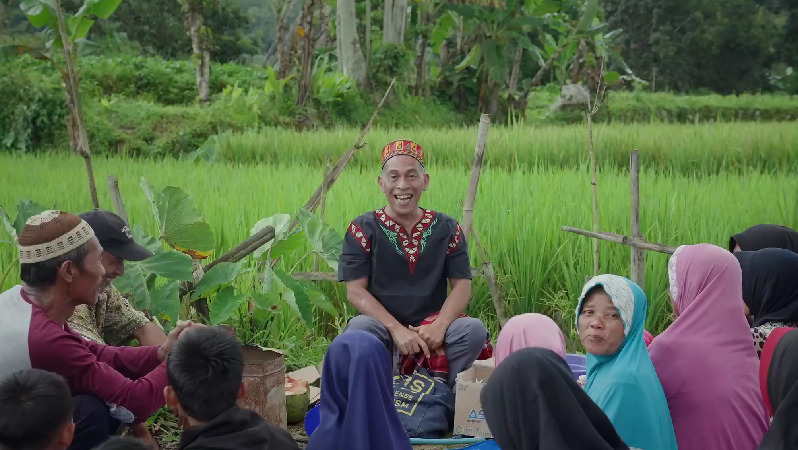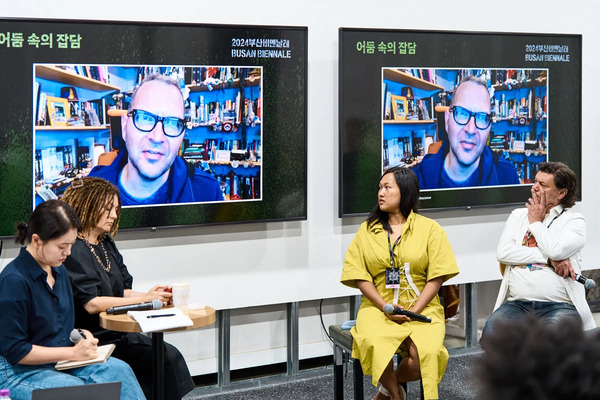Last week, we reflected on the 30-year history of the Gwangju Biennale and its achievements. This week, we will discuss the current state of various biennales actively held across Korea, their challenges, and the direction they need to take moving forward, alongside the Gwangju Biennale.
The Current State of the Gwangju Biennale and Korean Biennales
 Posters of Various Biennales in Korea
Posters of Various Biennales in KoreaAccording
to critic Kim Young-ho (Professor at Chung-Ang University), as of 2018, more
than 16 biennales were being held across South Korea.
Major
cities such as Seoul, Gwangju, Busan, Daejeon, Daegu, Cheongju, and Changwon
host these events, with representative biennales including the Gwangju
Biennale, Seoul Mediacity Biennale, Busan Biennale, Daegu Photo Biennale, and
Cheongju Craft Biennale. Recently, new biennales like the Yeosu International
Art Festival and the Yangnim Alley Biennale have also emerged, leading to Korea
being dubbed a "biennale powerhouse."
Biennales
play a crucial role in exploring contemporary issues, providing a platform for
discussion, reflecting the spirit of the times and cultural trends, and
expressing these through art.
They
also offer opportunities for artists from diverse countries and cultural
backgrounds to engage in global dialogue, share perspectives, and contribute to
the advancement of cultural and artistic endeavors by engaging both the public
and artists.
However,
in Korea, biennales often fail to recognize these original objectives and are
instead used as tools for regional promotion or tourist attraction, leading to
significant budget waste.
Issues in the Planning of Korean Biennales
There
is a severe shortage of experts in Korea who can plan and manage biennales at
an international level. Most biennales held domestically either imitate
successful foreign biennales or rely heavily on famous foreign curators.
The
goal of a biennale is to promote the development of Korean culture and art
through these events. While it may be necessary to rely on renowned foreign
curators in the beginning due to a lack of local expertise, we must learn from
their advanced mindset and know-how to establish independent biennales.
Unfortunately, there are very few biennales in Korea that offer the opportunity
to accumulate such experience, and there are no proper programs in place to
nurture local curators.
The Pros and Cons of Foreign Artistic Directors
For
large-scale events like the Gwangju Biennale and Busan Biennale, foreign
artistic directors or Korean curators with international experience are
typically selected.
Foreign
directors often have a deep understanding of global trends and diverse cultural
backgrounds, providing opportunities to revisit contemporary art within a
global context. For example, the artistic director of this year's Gwangju
Biennale, Nicolas Bourriaud, presented an exhibition reflecting Korean
realities and the global zeitgeist by combining pansori and contemporary
soundscapes.
However,
they may be criticized for lacking a deep understanding of Korea's historical
and social context and for being disconnected from the specific realities of
the country. Moreover, the absence of programs that allow them to transfer
their know-how to local curators makes it difficult for them to contribute
meaningfully to the Korean art scene.
Challenges for the Gwangju Biennale
Contemporary
global art has entered an era of internationalization, commercialization, and
specialization. This means that for Korean artists, artworks, and the broader
art culture to establish themselves properly, they not only require significant
capital but also need collaboration from experts in museums, galleries,
curation, and art criticism, forming teams to support artists.
However,
not only the Gwangju Biennale, which has been around for 30 years, but also
many other biennales in Korea have yet to establish such a professional system,
often ending up as one-off events organized by local governments. This
inefficient operation makes it difficult to develop Korea's contemporary art
scene or foster the cultural richness of the country.
For
these events to achieve sustained growth and national competitiveness, several
fundamental tasks must be prioritized.
First, the function of archives must be strengthened.
As large-scale events, biennales feature numerous artists from around the world who help define and showcase the spirit of an era, making it essential to preserve their content well.

Seoul Museum of Art Archive 〈Reference Library〉 ©Seoul Museum of Art
One of
the major shortcomings of Korea's contemporary art scene is the lack of
aesthetic and art historical documentation. The main reason for this is the
rush to organize biennales as one-off events, leaving no time for research and
documentation.
It is
now essential to build archives and personnel capable of researching and
recording the works and artists participating in the biennale, transforming
this into a valuable cultural asset for Korea.
Second, a professional training system for Korean artists and curators is necessary.
As mentioned earlier, organizing these large-scale local government events as one-time, short-term events leads not only to budget waste but also fails to contribute to the development of culture and art.

LATEST FORUM DISCUSSION- FOR THE ARTIST OF THE 21ST CENTURY
the fifth in a series of conversations organized in partnership with CUE Art Foundation.
Titled "Living Dualities" © CUE Art Foundation.
Biennales
are among the most important offline platforms to elevate the level of a
country’s art and culture.
Therefore,
they should be utilized to create exchange programs, workshops, and mentoring
programs that allow many domestic artists and curators to participate,
developing global competencies and enabling them to play a more significant
role and have a greater impact in the international art scene.
Lastly, the ability to engage with the public must be enhanced.
There are often criticisms that exhibitions are too difficult to understand or too political, but this is not necessarily a problem. The difference between art and popular culture is that art deals with the essence of the world and humanity. The essence of art, like the questions about humanity posed by emerging AI technology, is a natural exploration.

Turbine Hall Project at Tate Modern © Sarah Ransome Art
In
Western biennales, such as the Berlin Biennale, which is highly regarded for
shaping new discourses in contemporary art, they excel at contextualizing their
unique historical circumstances and realities, turning them into contemporary
issues and agendas.
This
shows that biennales are not just celebrations, but critical infrastructures
that explore and question the essence of human life and contemplate the ideal
future of humanity.
 Jonas Staal’s proposal for the New World Summit
structure, 12th Berlin Biennale (2012)
Jonas Staal’s proposal for the New World Summit
structure, 12th Berlin Biennale (2012)To help the general public engage with artworks that reflect artists' concerns about contemporary issues, it is crucial to develop programs that interpret and introduce these works appropriately and create structures that enable mutual growth by offering lectures or programs that facilitate public participation.
Conclusion and Future Prospects
Over
the past 30 years, the Gwangju Biennale has undoubtedly played a significant
role in promoting the internationalization of contemporary Korean art and
contributing to the development of Korea's contemporary art scene by
effectively delivering messages of the times through art exhibitions.
However,
the current situation, where similar biennales proliferate without clear
differentiation and exhibitions of indistinct format repeat, hinders progress
and increases the likelihood of these events eventually being reduced to mere
festivals.
Therefore,
moving forward, it is crucial to establish a new biennale format that can build
a sustainable infrastructure unique to Korea, fostering a distinct and
differentiated biennale that stands out on the global stage.
Through
this, the biennale can become a unique artistic platform recognized both
domestically and internationally, while also serving as a key opportunity to
promote Korean cultural identity and artistic value globally. Ultimately, such
biennales could grow into a cultural brand representing Korea in the global art
world, expanding its international influence.
Jay Jongho Kim graduated from the Department of Art Theory at Hongik University and earned his master's degree in Art Planning from the same university. From 1996 to 2006, he worked as a curator at Gallery Seomi, planning director at CAIS Gallery, head of the curatorial research team at Art Center Nabi, director at Gallery Hyundai, and curator at Gana New York. From 2008 to 2017, he served as the executive director of Doosan Gallery Seoul & New York and Doosan Residency New York, introducing Korean contemporary artists to the local scene in New York. After returning to Korea in 2017, he worked as an art consultant, conducting art education, collection consulting, and various art projects. In 2021, he founded A Project Company and is currently running the platforms K-ARTNOW.COM and K-ARTIST.COM, which aim to promote Korean contemporary art on the global stage.
























